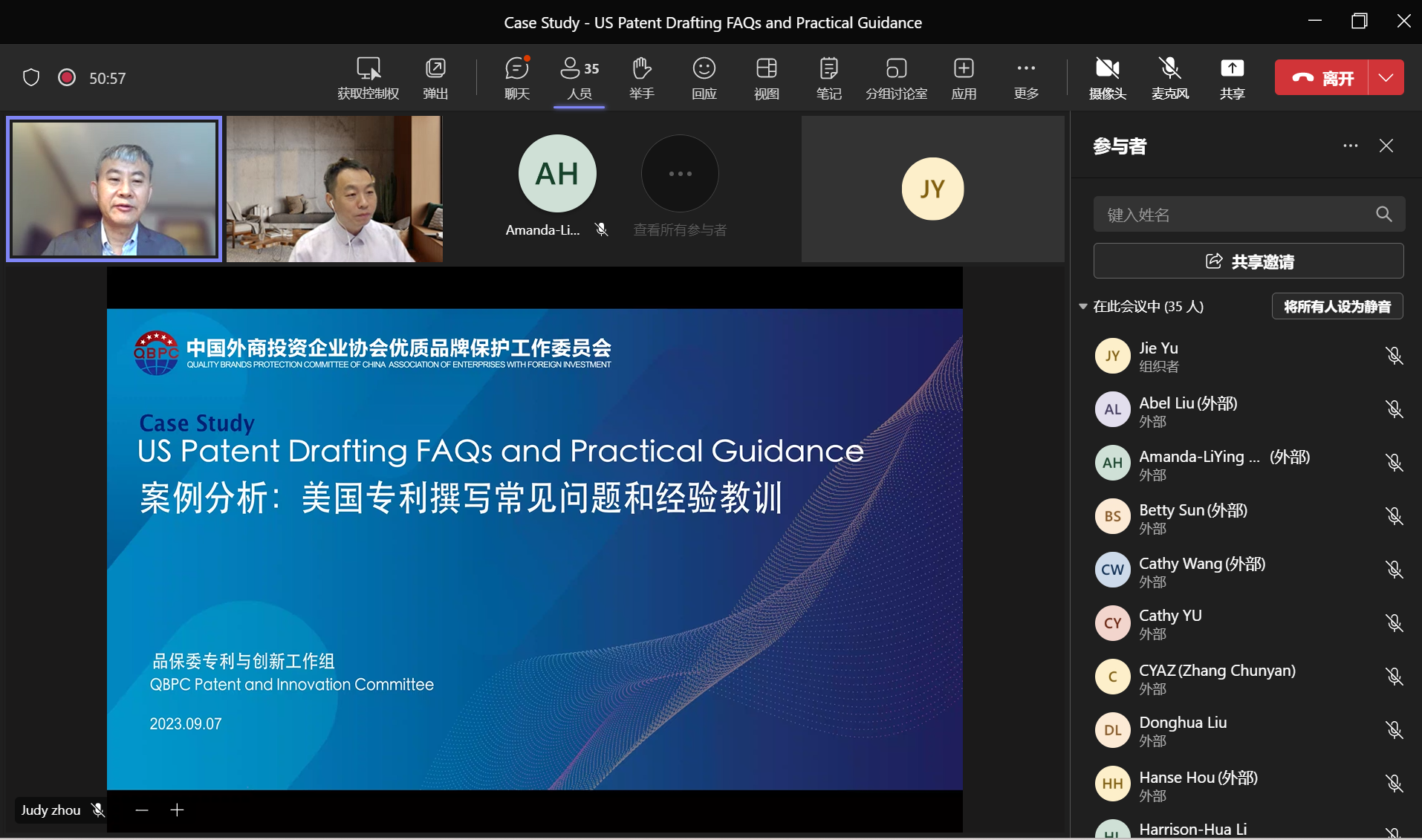The US patent application, as an integral component of multinational corporations' worldwide patent layout, is critical to their technological innovation and market competitiveness. On September 7, the Quality Brand Protection Committee of China Association of Enterprises with Foreign Investment (QBPC) Patent and Innovation Committee presented an online case study on US patent drafting with ZHU Shaobin as the speaker. Frank Liu, Patent and Innovation Committee Chair, presided over the session, which was attended by around 30 QBPC members.

After summarizing the enablement and written description criteria of US patent drafting, Zhu Shaobin listed the elements for drafting high-quality US patent claims and specifications. Then, in terms of the importance of paying attention to US patent eligibility requirements when drafting patent applications, he stated that the courts had classified the subject matter eligibility in the US patent eligibility laws into four categories through judicial interpretations as well as providing detailed explanations of the judicial exceptions. After that, he elaborated on the strategies for drafting applications and claims through case study. Next, Zhu outlined description requirements, written description, proof of possession of the invention, enablement, and drafting principles according to Section 112 of Consolidated Patent Laws. Furthermore, he detailed how to make decision on claim construction in terms of internal evidence, extrinsic evidence, presumed validity and so on. Finally, based on previous judgments and his personal experience, Zhu offered advice on drafting claims and specifications, e.g. the language should be as broad as possible but have no negative potentials when defining key terms.
In the Q&A session, Zhu provided detailed answers to questions on equivalent infringement of numerical ranges, precautions for writing software and artificial intelligence cases.
